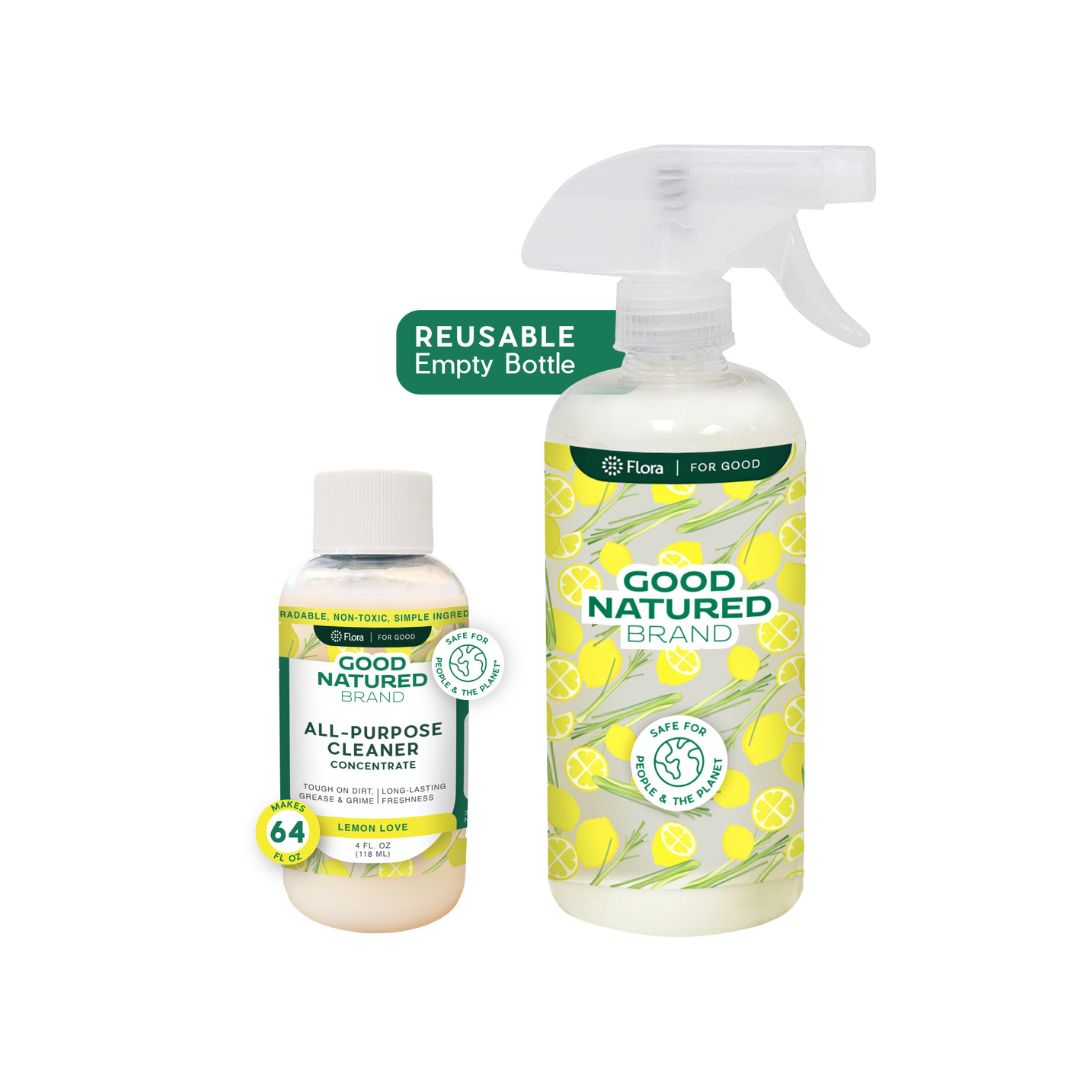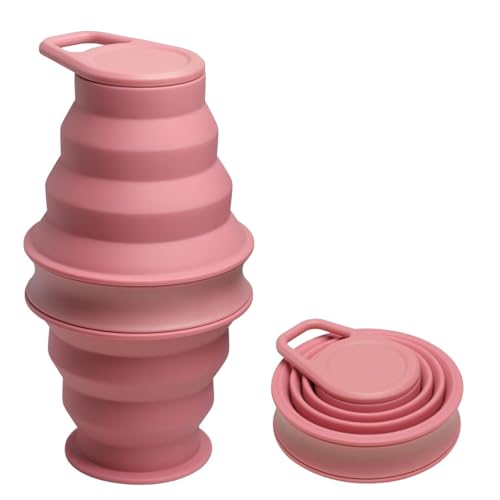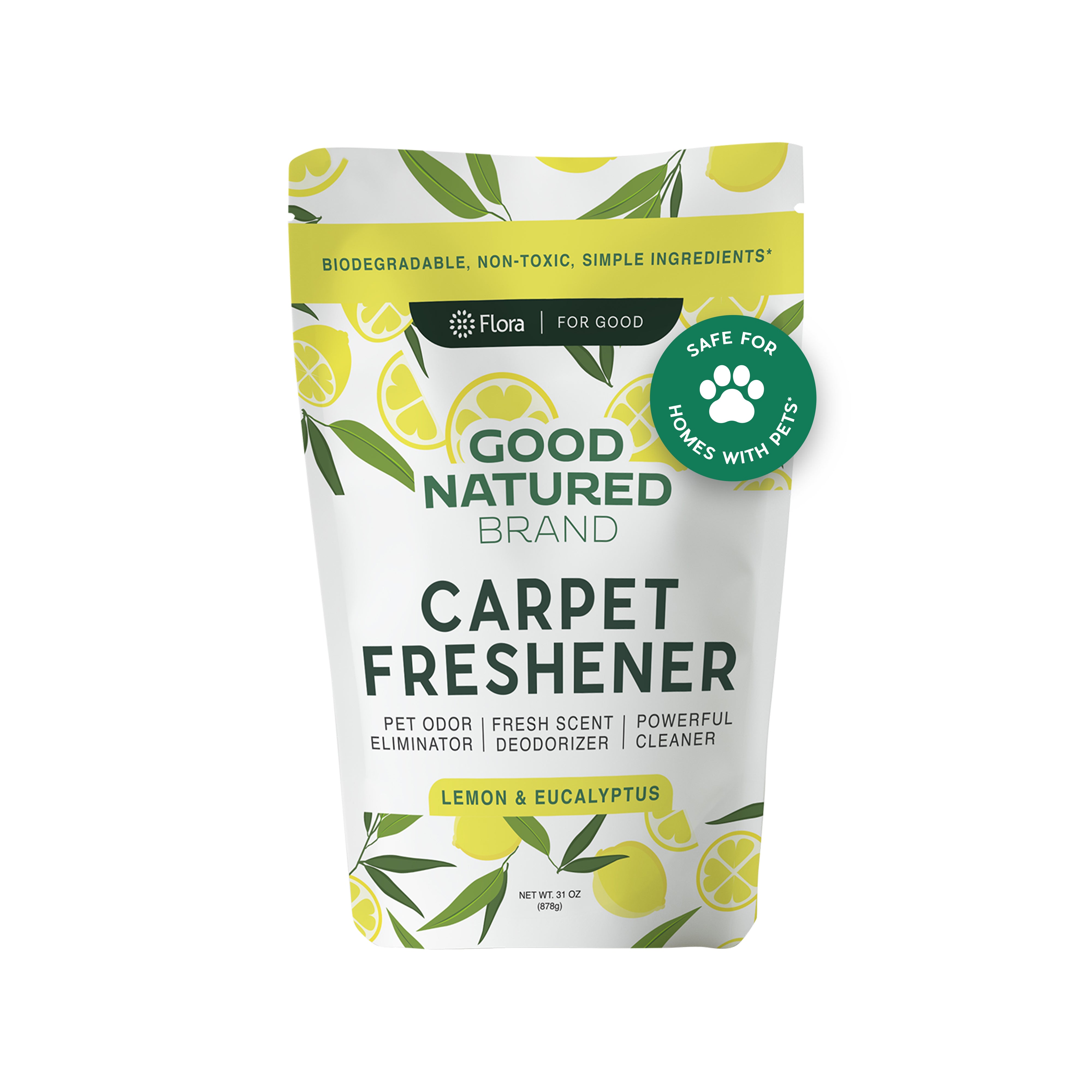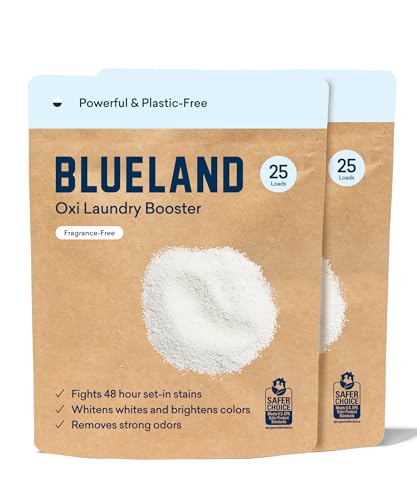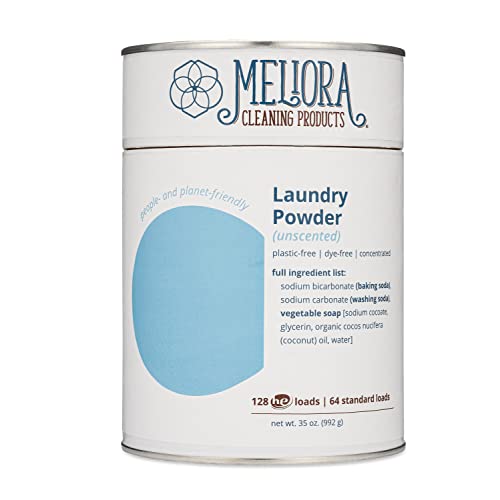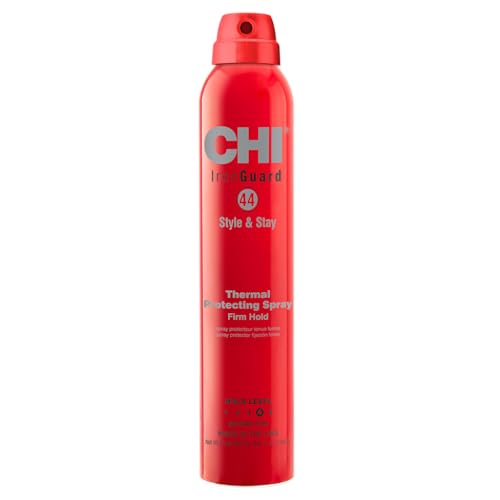
CHI 44 Iron Guard Heat Protectant Spray - Firm Hold, Sulfate & Paraben-Free - 10 Oz


Aminomethyl Propanol
High RiskAminomethyl propanol is a small molecular weight buffering agent commonly used in cosmetic formulations to help maintain pH levels. It serves as an emulsifier and can enhance product stability and performance in various personal care products.
Sustai Insights
Aminomethyl propanol offers functional benefits as a buffering agent and enhances the stability of formulations. However, it is associated with skin and eye irritation and is subject to high use restrictions. Regulatory agencies have noted its potential risks, leading to an overall high-risk assessment. Safe usage practices should be followed, and alternatives such as milder pH adjusters may be considered.
Coumarin
High RiskCoumarin is a naturally occurring and synthetic compound found in many plants. It is commonly used in fragrances, flavorings, and as a potential therapeutic agent due to its aromatic properties. Coumarin has applications in cosmetics and personal care products, contributing to their scent and stability.
Sustai Insights
Coumarin offers functional benefits as a fragrance and flavoring agent, with potential health benefits in certain therapeutic contexts. However, it is associated with high allergenic potential and may pose risks such as skin irritation. Environmental concerns include its classification as a pollutant, with possible bioaccumulation effects. Regulatory bodies have restricted its use in specific products, indicating a moderate to high risk overall. Safe usage practices are advised, and alternatives like natural essential oils could be considered.
Linalool
High RiskLinalool is a terpene commonly found in various plants, particularly in lavender and mint. It is primarily used in products for its fragrance and potential antimicrobial properties. Linalool is also utilized in formulations for its ability to enhance the sensory experience of personal care and household products.
Sustai Insights
Linalool offers functional benefits as a naturally occurring fragrance component and may exhibit antimicrobial properties. However, it presents high allergenic potential, with concerns about skin irritation and sensitization. Environmental risks include contamination issues, though it is not classified as a persistent pollutant. Regulatory bodies have noted the need for careful handling due to its allergenic nature. Overall, despite some beneficial attributes, the ingredient carries a high risk profile, warranting cautious use and consideration of safer alternatives.
Retinyl Palmitate (Vitamin A Palmitate)
High RiskRetinyl palmitate, also known as vitamin A palmitate, is an ester of retinol and palmitic acid. It serves primarily as a skin-conditioning agent, promoting skin health and rejuvenation through its role in cellular turnover and differentiation. This ingredient is commonly used in cosmetic formulations.
Sustai Insights
Retinyl palmitate offers functional benefits such as enhancing skin texture and providing anti-aging effects. However, it is associated with high developmental and reproductive toxicity concerns, while also posing moderate risks for carcinogenicity. Environmentally, it may contribute to pollution and bioaccumulation. Regulatory bodies have imposed use restrictions due to these health risks, leading to an overall high-risk assessment. Safe usage practices are essential, and alternatives like retinol or plant-derived vitamin A sources may be considered.
Citronellol
High RiskCitronellol is a naturally occurring scent ingredient commonly found in various essential oils. It is primarily used for its aromatic properties in perfumes, cosmetics, and household products, contributing to fragrance profiles.
Sustai Insights
Citronellol serves as a fragrance component, enhancing product appeal. However, it has a high allergenic potential, posing risks of skin irritation and sensitization. Environmental concerns include contamination risks. Regulatory bodies have restrictions on its use, emphasizing caution. Overall, citronellol presents a high risk regarding health and safety, warranting careful consideration in product formulations.
Ci 77000
High RiskCI 77000, also known as aluminum powder, is a metallic substance commonly used as a color additive in cosmetics and personal care products. It imparts a metallic sheen and is often included in formulations for its aesthetic properties.
Sustai Insights
Aluminum powder serves effectively as a colorant, providing a distinctive metallic finish in cosmetic products. However, it is associated with high concerns regarding allergies and neurotoxicity, alongside potential adverse effects on skin and respiratory health. Regulatory bodies impose stringent usage restrictions due to these health risks, categorizing it as a high-risk ingredient overall. Users should consider safer alternatives or opt for products that do not contain aluminum powder, especially for sensitive applications.
Hexyl Cinnamal
High RiskHexyl cinnamal is a naturally occurring and synthetic fragrance ingredient used primarily for its pleasant floral scent. It is commonly found in personal care and cosmetic products, contributing to their aromatic profiles.
Sustai Insights
Hexyl cinnamal provides a desirable fragrance in cosmetic formulations, enhancing product appeal. However, it is associated with a high allergenic potential, posing risks of skin irritation and sensitization. While it is not classified as a carcinogen or reproductive toxin, its use is restricted in certain regions. Overall, the ingredient presents a high risk due to its allergenic properties, necessitating caution in formulations, especially for sensitive populations.
Benzyl Salicylate
High RiskBenzyl salicylate is an ester of benzyl alcohol and salicylic acid, commonly used in personal care products as a fragrance component and UV filter. It is known for its ability to enhance product stability and provide a pleasant scent.
Sustai Insights
Benzyl salicylate offers functional benefits such as UV protection and fragrance enhancement. However, it is associated with a high allergenic potential and is categorized as a skin irritant, posing significant health risks. Environmental risks include its potential to act as a pollutant. Regulatory authorities have imposed restrictions on its use due to these concerns. Overall, it is assessed as high risk, necessitating caution in usage and consideration of safer alternatives.
Fragrance
High RiskFragrance refers to a mixture of aromatic compounds used in products to provide scent. It is commonly listed as 'fragrance' or 'parfum' on product labels and can serve various functions, including enhancing user experience and masking undesirable odors.
Sustai Insights
Fragrance offers functional benefits by improving product appeal; however, it poses significant health risks, notably a high likelihood of causing allergies and allergic contact dermatitis. Environmental risks include potential pollution and endocrine disruption, though its overall carcinogenicity is low. Regulatory bodies have noted concerns regarding its use, leading to a high-risk classification. Safe usage practices should be observed, and alternatives such as natural essential oils are recommended for those sensitive to synthetic fragrances.
Limonene
Medium RiskLimonene is a scent ingredient and solvent naturally found in citrus fruits, commonly used in personal care and cleaning products for its fragrant properties. It serves as a flavoring agent and enhances the overall sensory experience of products.
Sustai Insights
Limonene offers functional benefits such as acting as a solvent and fragrance enhancer. However, it carries a high allergenic potential, which can trigger skin or respiratory sensitivities in some individuals. Environmental concerns include moderate persistence and bioaccumulation, along with potential ecotoxicity. Regulatory restrictions necessitate verification in products containing this ingredient. Overall, the risk level is assessed as medium, emphasizing the importance of cautious use, particularly for sensitive populations. Safer alternatives may be considered to mitigate these risks.
Titanium Dioxide
Medium RiskTitanium dioxide is an inorganic compound used primarily as a pigment due to its brightness and high refractive index. It is commonly found in products such as paints, coatings, plastics, and cosmetics, providing color and opacity.
Sustai Insights
Titanium dioxide serves effectively as a UV filter and colorant, enhancing product stability and performance. However, it has been classified as a moderate concern for potential carcinogenicity and carries low risks for allergies and reproductive toxicity. Environmental risks include its pollutant potential, though it is not known to bioaccumulate. Regulatory bodies have issued specific restrictions regarding its use, leading to an overall medium risk assessment. Safe usage practices should be observed, with consideration for alternatives such as zinc oxide for a more sustainable option.
Panthenol, D
Low RiskPanthenol, also known as provitamin B5, is a humectant commonly used in cosmetic and personal care products. It functions primarily as a moisturizer, enhancing skin hydration and improving the appearance of hair by imparting shine and softness.
Sustai Insights
Panthenol is effective in retaining moisture, thus providing functional benefits for skin and hair care products. It is generally recognized as safe, with low concerns regarding carcinogenicity, allergies, and developmental toxicity. However, potential cumulative exposure from multiple sources exists. Environmental risks are minimal, and it is not bioaccumulative. Regulatory bodies have not issued significant warnings; therefore, the overall risk level is assessed as low. For optimal use, it is recommended to follow product guidelines, and alternatives such as glycerin may also be considered for moisturizing effects.
Phenyl Dimethicone
Low RiskPhenyl dimethicone is a siloxane polymer commonly used in cosmetic and personal care products for its ability to provide a smooth, silky texture and enhance product spreadability. It acts as a conditioning agent and film-former, providing a protective barrier on the skin or hair.
Sustai Insights
Phenyl dimethicone offers functional benefits such as improving texture and moisture retention in formulations. It poses low health risks, with minimal concerns regarding carcinogenicity, allergies, or reproductive toxicity. Environmental impacts are also low, with no significant pollutant or bioaccumulation risks. Regulatory assessments show no restrictions, indicating a safe profile for consumer use. Usage should follow recommended guidelines to ensure safety, with alternatives like natural oils available for those seeking plant-based options. Overall, the ingredient is assessed as low risk.
Isoamyl Cinnamate
Low RiskIsoamyl cinnamate is an organic compound commonly used as a fragrance ingredient in personal care and cosmetic products. It is valued for its sweet, fruity scent that resembles banana and is often utilized in formulations to enhance aroma and consumer appeal.
Sustai Insights
Isoamyl cinnamate demonstrates functional benefits as a fragrance component without significant health risks, categorized under low concerns for carcinogenicity, allergies, and reproductive toxicity. Environmental risks are minimal, as it is not classified as a pollutant or bioaccumulative. Regulatory assessments indicate no current restrictions, supporting its safe usage in cosmetics. Overall, it presents a low risk, making it a viable option in formulation, although alternatives should still be considered for sustainability.
Hydrolyzed Silk
Low RiskHydrolyzed silk is a form of silk protein that has been broken down into smaller peptides, enhancing its ability to be absorbed by the skin and hair. It is commonly used in cosmetic and personal care products for its moisturizing and film-forming properties, contributing to improved texture and hydration.
Sustai Insights
Hydrolyzed silk offers functional benefits such as enhancing moisture retention and providing a silky feel to formulations. It is generally considered low risk for health concerns, with minimal allergenic potential and no significant reproductive toxicity reported. Environmentally, it poses low risks, as it is not bioaccumulative or a known pollutant. Regulatory bodies have not issued significant warnings. Overall, it is a low-risk ingredient. Safe usage involves avoiding excessively high concentrations, and alternatives include plant-based proteins like hydrolyzed wheat or rice.
Trimethylsiloxane
Low RiskTrimethylsiloxane is a silicone compound commonly used in personal care and cosmetic products for its properties as a conditioning agent and emulsifier. It helps improve texture and spreadability, contributing to a smooth application and enhanced product performance.
Sustai Insights
Trimethylsiloxane is valued for its effective conditioning properties and emulsification capabilities, contributing to improved product texture. It is considered low risk for health concerns, including carcinogenicity, allergies, and reproductive toxicity. Environmental risk is also low, with no known bioaccumulation or pollution potential. Regulatory agencies do not impose significant restrictions on its use. Safe usage practices should be followed, but alternatives such as natural oils or waxes may provide similar benefits with potentially lower environmental impact. Overall, the risk assessment for trimethylsiloxane is low.
Sand
Low RiskSand is loose, granular particles of worn or disintegrated rock, primarily composed of silica. It is commonly used as an abrasive, filler, or in construction and landscaping for its structural properties.
Sustai Insights
Sand offers functional benefits such as providing bulk and texture in various products, and it is generally considered to have low health risks, with minimal concerns regarding carcinogenicity, allergies, or reproductive toxicity. Environmentally, sand does not contribute significantly to pollution and is not bioaccumulative. Regulatory bodies do not impose restrictions on sand usage, maintaining its low-risk status. Safe usage practices should be followed to avoid inhalation of fine particles. Overall, sand is a low-risk ingredient with no notable negative impacts.
Argania Spinosa (Argan) Kernel Oil
Low RiskArgania spinosa (argan) kernel oil is a fixed oil extracted from the kernels of the argan tree, native to Morocco. It is commonly used in cosmetic formulations for its moisturizing properties, serving as an emollient and skin conditioner.
Sustai Insights
Argania spinosa kernel oil offers functional benefits such as effective hydration and nourishment for the skin and hair. It is sustainably sourced and biodegradable, contributing positively to environmental considerations. Health risks are low, with minimal concerns regarding carcinogenicity, allergies, or reproductive toxicity. There are no current regulatory restrictions on its use. Overall, it poses low risk, making it a suitable ingredient in cosmetic products. Safe usage practices should be maintained, and alternatives like jojoba oil may also be considered for similar benefits.
Alcohol Denatured
Low RiskAlcohol denatured, also known as specially denatured (SD) alcohol, is a mixture of ethanol and other substances that render it unsuitable for consumption. It is commonly used in cosmetic and personal care products as a solvent, preservative, and penetration enhancer, facilitating the absorption of other ingredients.
Sustai Insights
Alcohol denatured offers functional benefits as a solvent and preservative, aiding in the formulation of various products. It is not associated with significant health risks, with low concerns regarding carcinogenicity, allergies, and reproductive toxicity. Environmental risks are minimal, and it is not classified as a pollutant. Regulatory bodies do not impose major restrictions on its use, indicating a low overall risk level. Safe usage practices should be followed to minimize exposure, and alternative solvents can be considered for those seeking greener options.
Simmondsia Chinensis (Jojoba)
Low RiskSimmondsia chinensis, commonly known as jojoba, is an oil derived from the seeds of the jojoba plant. It is commonly used in cosmetic formulations for its moisturizing properties, acting as an emollient and skin conditioning agent.
Sustai Insights
Jojoba oil offers functional benefits such as effective skin moisturization and is biodegradable, with sustainable sourcing practices. Health risks are low, with minimal concerns regarding carcinogenicity, allergies, and reproductive toxicity. Environmental impact is negligible, with no pollutant or bioaccumulation potential. Regulatory status is favorable with no significant restrictions noted. Overall, it is assessed as low risk, and safe usage practices should be maintained. Alternatives include other plant-derived oils like argan or almond oil, which may provide similar benefits.
Aminomethyl Propanol
High RiskAminomethyl propanol is a small molecular weight buffering agent commonly used in cosmetic formulations to help maintain pH levels. It serves as an emulsifier and can enhance product stability and performance in various personal care products.
Sustai Insights
Aminomethyl propanol offers functional benefits as a buffering agent and enhances the stability of formulations. However, it is associated with skin and eye irritation and is subject to high use restrictions. Regulatory agencies have noted its potential risks, leading to an overall high-risk assessment. Safe usage practices should be followed, and alternatives such as milder pH adjusters may be considered.
Coumarin
High RiskCoumarin is a naturally occurring and synthetic compound found in many plants. It is commonly used in fragrances, flavorings, and as a potential therapeutic agent due to its aromatic properties. Coumarin has applications in cosmetics and personal care products, contributing to their scent and stability.
Sustai Insights
Coumarin offers functional benefits as a fragrance and flavoring agent, with potential health benefits in certain therapeutic contexts. However, it is associated with high allergenic potential and may pose risks such as skin irritation. Environmental concerns include its classification as a pollutant, with possible bioaccumulation effects. Regulatory bodies have restricted its use in specific products, indicating a moderate to high risk overall. Safe usage practices are advised, and alternatives like natural essential oils could be considered.
Panthenol, D
Low RiskPanthenol, also known as provitamin B5, is a humectant commonly used in cosmetic and personal care products. It functions primarily as a moisturizer, enhancing skin hydration and improving the appearance of hair by imparting shine and softness.
Sustai Insights
Panthenol is effective in retaining moisture, thus providing functional benefits for skin and hair care products. It is generally recognized as safe, with low concerns regarding carcinogenicity, allergies, and developmental toxicity. However, potential cumulative exposure from multiple sources exists. Environmental risks are minimal, and it is not bioaccumulative. Regulatory bodies have not issued significant warnings; therefore, the overall risk level is assessed as low. For optimal use, it is recommended to follow product guidelines, and alternatives such as glycerin may also be considered for moisturizing effects.
Linalool
High RiskLinalool is a terpene commonly found in various plants, particularly in lavender and mint. It is primarily used in products for its fragrance and potential antimicrobial properties. Linalool is also utilized in formulations for its ability to enhance the sensory experience of personal care and household products.
Sustai Insights
Linalool offers functional benefits as a naturally occurring fragrance component and may exhibit antimicrobial properties. However, it presents high allergenic potential, with concerns about skin irritation and sensitization. Environmental risks include contamination issues, though it is not classified as a persistent pollutant. Regulatory bodies have noted the need for careful handling due to its allergenic nature. Overall, despite some beneficial attributes, the ingredient carries a high risk profile, warranting cautious use and consideration of safer alternatives.
Phenyl Dimethicone
Low RiskPhenyl dimethicone is a siloxane polymer commonly used in cosmetic and personal care products for its ability to provide a smooth, silky texture and enhance product spreadability. It acts as a conditioning agent and film-former, providing a protective barrier on the skin or hair.
Sustai Insights
Phenyl dimethicone offers functional benefits such as improving texture and moisture retention in formulations. It poses low health risks, with minimal concerns regarding carcinogenicity, allergies, or reproductive toxicity. Environmental impacts are also low, with no significant pollutant or bioaccumulation risks. Regulatory assessments show no restrictions, indicating a safe profile for consumer use. Usage should follow recommended guidelines to ensure safety, with alternatives like natural oils available for those seeking plant-based options. Overall, the ingredient is assessed as low risk.
Retinyl Palmitate (Vitamin A Palmitate)
High RiskRetinyl palmitate, also known as vitamin A palmitate, is an ester of retinol and palmitic acid. It serves primarily as a skin-conditioning agent, promoting skin health and rejuvenation through its role in cellular turnover and differentiation. This ingredient is commonly used in cosmetic formulations.
Sustai Insights
Retinyl palmitate offers functional benefits such as enhancing skin texture and providing anti-aging effects. However, it is associated with high developmental and reproductive toxicity concerns, while also posing moderate risks for carcinogenicity. Environmentally, it may contribute to pollution and bioaccumulation. Regulatory bodies have imposed use restrictions due to these health risks, leading to an overall high-risk assessment. Safe usage practices are essential, and alternatives like retinol or plant-derived vitamin A sources may be considered.
Isoamyl Cinnamate
Low RiskIsoamyl cinnamate is an organic compound commonly used as a fragrance ingredient in personal care and cosmetic products. It is valued for its sweet, fruity scent that resembles banana and is often utilized in formulations to enhance aroma and consumer appeal.
Sustai Insights
Isoamyl cinnamate demonstrates functional benefits as a fragrance component without significant health risks, categorized under low concerns for carcinogenicity, allergies, and reproductive toxicity. Environmental risks are minimal, as it is not classified as a pollutant or bioaccumulative. Regulatory assessments indicate no current restrictions, supporting its safe usage in cosmetics. Overall, it presents a low risk, making it a viable option in formulation, although alternatives should still be considered for sustainability.
Citronellol
High RiskCitronellol is a naturally occurring scent ingredient commonly found in various essential oils. It is primarily used for its aromatic properties in perfumes, cosmetics, and household products, contributing to fragrance profiles.
Sustai Insights
Citronellol serves as a fragrance component, enhancing product appeal. However, it has a high allergenic potential, posing risks of skin irritation and sensitization. Environmental concerns include contamination risks. Regulatory bodies have restrictions on its use, emphasizing caution. Overall, citronellol presents a high risk regarding health and safety, warranting careful consideration in product formulations.
Hydrolyzed Silk
Low RiskHydrolyzed silk is a form of silk protein that has been broken down into smaller peptides, enhancing its ability to be absorbed by the skin and hair. It is commonly used in cosmetic and personal care products for its moisturizing and film-forming properties, contributing to improved texture and hydration.
Sustai Insights
Hydrolyzed silk offers functional benefits such as enhancing moisture retention and providing a silky feel to formulations. It is generally considered low risk for health concerns, with minimal allergenic potential and no significant reproductive toxicity reported. Environmentally, it poses low risks, as it is not bioaccumulative or a known pollutant. Regulatory bodies have not issued significant warnings. Overall, it is a low-risk ingredient. Safe usage involves avoiding excessively high concentrations, and alternatives include plant-based proteins like hydrolyzed wheat or rice.
Trimethylsiloxane
Low RiskTrimethylsiloxane is a silicone compound commonly used in personal care and cosmetic products for its properties as a conditioning agent and emulsifier. It helps improve texture and spreadability, contributing to a smooth application and enhanced product performance.
Sustai Insights
Trimethylsiloxane is valued for its effective conditioning properties and emulsification capabilities, contributing to improved product texture. It is considered low risk for health concerns, including carcinogenicity, allergies, and reproductive toxicity. Environmental risk is also low, with no known bioaccumulation or pollution potential. Regulatory agencies do not impose significant restrictions on its use. Safe usage practices should be followed, but alternatives such as natural oils or waxes may provide similar benefits with potentially lower environmental impact. Overall, the risk assessment for trimethylsiloxane is low.
Sand
Low RiskSand is loose, granular particles of worn or disintegrated rock, primarily composed of silica. It is commonly used as an abrasive, filler, or in construction and landscaping for its structural properties.
Sustai Insights
Sand offers functional benefits such as providing bulk and texture in various products, and it is generally considered to have low health risks, with minimal concerns regarding carcinogenicity, allergies, or reproductive toxicity. Environmentally, sand does not contribute significantly to pollution and is not bioaccumulative. Regulatory bodies do not impose restrictions on sand usage, maintaining its low-risk status. Safe usage practices should be followed to avoid inhalation of fine particles. Overall, sand is a low-risk ingredient with no notable negative impacts.
Argania Spinosa (Argan) Kernel Oil
Low RiskArgania spinosa (argan) kernel oil is a fixed oil extracted from the kernels of the argan tree, native to Morocco. It is commonly used in cosmetic formulations for its moisturizing properties, serving as an emollient and skin conditioner.
Sustai Insights
Argania spinosa kernel oil offers functional benefits such as effective hydration and nourishment for the skin and hair. It is sustainably sourced and biodegradable, contributing positively to environmental considerations. Health risks are low, with minimal concerns regarding carcinogenicity, allergies, or reproductive toxicity. There are no current regulatory restrictions on its use. Overall, it poses low risk, making it a suitable ingredient in cosmetic products. Safe usage practices should be maintained, and alternatives like jojoba oil may also be considered for similar benefits.
Ci 77000
High RiskCI 77000, also known as aluminum powder, is a metallic substance commonly used as a color additive in cosmetics and personal care products. It imparts a metallic sheen and is often included in formulations for its aesthetic properties.
Sustai Insights
Aluminum powder serves effectively as a colorant, providing a distinctive metallic finish in cosmetic products. However, it is associated with high concerns regarding allergies and neurotoxicity, alongside potential adverse effects on skin and respiratory health. Regulatory bodies impose stringent usage restrictions due to these health risks, categorizing it as a high-risk ingredient overall. Users should consider safer alternatives or opt for products that do not contain aluminum powder, especially for sensitive applications.
Alcohol Denatured
Low RiskAlcohol denatured, also known as specially denatured (SD) alcohol, is a mixture of ethanol and other substances that render it unsuitable for consumption. It is commonly used in cosmetic and personal care products as a solvent, preservative, and penetration enhancer, facilitating the absorption of other ingredients.
Sustai Insights
Alcohol denatured offers functional benefits as a solvent and preservative, aiding in the formulation of various products. It is not associated with significant health risks, with low concerns regarding carcinogenicity, allergies, and reproductive toxicity. Environmental risks are minimal, and it is not classified as a pollutant. Regulatory bodies do not impose major restrictions on its use, indicating a low overall risk level. Safe usage practices should be followed to minimize exposure, and alternative solvents can be considered for those seeking greener options.
Limonene
Medium RiskLimonene is a scent ingredient and solvent naturally found in citrus fruits, commonly used in personal care and cleaning products for its fragrant properties. It serves as a flavoring agent and enhances the overall sensory experience of products.
Sustai Insights
Limonene offers functional benefits such as acting as a solvent and fragrance enhancer. However, it carries a high allergenic potential, which can trigger skin or respiratory sensitivities in some individuals. Environmental concerns include moderate persistence and bioaccumulation, along with potential ecotoxicity. Regulatory restrictions necessitate verification in products containing this ingredient. Overall, the risk level is assessed as medium, emphasizing the importance of cautious use, particularly for sensitive populations. Safer alternatives may be considered to mitigate these risks.
Titanium Dioxide
Medium RiskTitanium dioxide is an inorganic compound used primarily as a pigment due to its brightness and high refractive index. It is commonly found in products such as paints, coatings, plastics, and cosmetics, providing color and opacity.
Sustai Insights
Titanium dioxide serves effectively as a UV filter and colorant, enhancing product stability and performance. However, it has been classified as a moderate concern for potential carcinogenicity and carries low risks for allergies and reproductive toxicity. Environmental risks include its pollutant potential, though it is not known to bioaccumulate. Regulatory bodies have issued specific restrictions regarding its use, leading to an overall medium risk assessment. Safe usage practices should be observed, with consideration for alternatives such as zinc oxide for a more sustainable option.
Hexyl Cinnamal
High RiskHexyl cinnamal is a naturally occurring and synthetic fragrance ingredient used primarily for its pleasant floral scent. It is commonly found in personal care and cosmetic products, contributing to their aromatic profiles.
Sustai Insights
Hexyl cinnamal provides a desirable fragrance in cosmetic formulations, enhancing product appeal. However, it is associated with a high allergenic potential, posing risks of skin irritation and sensitization. While it is not classified as a carcinogen or reproductive toxin, its use is restricted in certain regions. Overall, the ingredient presents a high risk due to its allergenic properties, necessitating caution in formulations, especially for sensitive populations.
Benzyl Salicylate
High RiskBenzyl salicylate is an ester of benzyl alcohol and salicylic acid, commonly used in personal care products as a fragrance component and UV filter. It is known for its ability to enhance product stability and provide a pleasant scent.
Sustai Insights
Benzyl salicylate offers functional benefits such as UV protection and fragrance enhancement. However, it is associated with a high allergenic potential and is categorized as a skin irritant, posing significant health risks. Environmental risks include its potential to act as a pollutant. Regulatory authorities have imposed restrictions on its use due to these concerns. Overall, it is assessed as high risk, necessitating caution in usage and consideration of safer alternatives.
Fragrance
High RiskFragrance refers to a mixture of aromatic compounds used in products to provide scent. It is commonly listed as 'fragrance' or 'parfum' on product labels and can serve various functions, including enhancing user experience and masking undesirable odors.
Sustai Insights
Fragrance offers functional benefits by improving product appeal; however, it poses significant health risks, notably a high likelihood of causing allergies and allergic contact dermatitis. Environmental risks include potential pollution and endocrine disruption, though its overall carcinogenicity is low. Regulatory bodies have noted concerns regarding its use, leading to a high-risk classification. Safe usage practices should be observed, and alternatives such as natural essential oils are recommended for those sensitive to synthetic fragrances.
Simmondsia Chinensis (Jojoba)
Low RiskSimmondsia chinensis, commonly known as jojoba, is an oil derived from the seeds of the jojoba plant. It is commonly used in cosmetic formulations for its moisturizing properties, acting as an emollient and skin conditioning agent.
Sustai Insights
Jojoba oil offers functional benefits such as effective skin moisturization and is biodegradable, with sustainable sourcing practices. Health risks are low, with minimal concerns regarding carcinogenicity, allergies, and reproductive toxicity. Environmental impact is negligible, with no pollutant or bioaccumulation potential. Regulatory status is favorable with no significant restrictions noted. Overall, it is assessed as low risk, and safe usage practices should be maintained. Alternatives include other plant-derived oils like argan or almond oil, which may provide similar benefits.
Experience the dual benefits of CHI 44 Iron Guard Style & Stay Firm Hold Protecting Spray. This innovative heat protectant not only secures your hairstyle but also shields your hair from damaging heat, ensuring vibrant shine and resilience. Ideal for those who prioritize healthy hair without compromising on style, this sulfate and paraben-free formula is perfect for blowouts and long-lasting looks.
- Dual-Purpose Protection: Provides thermal protection while delivering a firm hold, making it essential for blowouts and styling.
- Strengthens Hair: Enriched with jojoba and argan oil, it enhances resilience against heat damage, leaving hair healthy and shiny.
- Ceramic & Protein Formula: Utilizes advanced technology to interlink proteins into hair strands, promoting luster and strength.
- Easy Application: Simply mist on 90% dry hair before styling, ensuring even coverage for optimal protection.
- Ethical Brand Commitment: CHI is dedicated to cruelty-free, ethical practices, reflecting a commitment to both hair health and environmental sustainability.
Subscribe & Save with Sustai
- Best Price Guarantee: Always enjoy the lowest prices on sustainable home essentials.
- No Surprises: We’ll notify you before shipping. No hidden fees, ever.
- You’re in Charge: Change, pause, or cancel your subscription anytime with ease.
- Eco-Friendly Deliveries: Our grouped shipments mean less packaging and lower emissions.
Join us on a sustainable journey. Special offers for a limited time! Prices and promotions may change.
Recommended Products
Experience the dual benefits of CHI 44 Iron Guard Style & Stay Firm Hold Protecting Spray. This innovative heat protectant not only secures your hairstyle but also shields your hair from damaging heat, ensuring vibrant shine and resilience. Ideal for those who prioritize healthy hair without compromising on style, this sulfate and paraben-free formula is perfect for blowouts and long-lasting looks.
- Dual-Purpose Protection: Provides thermal protection while delivering a firm hold, making it essential for blowouts and styling.
- Strengthens Hair: Enriched with jojoba and argan oil, it enhances resilience against heat damage, leaving hair healthy and shiny.
- Ceramic & Protein Formula: Utilizes advanced technology to interlink proteins into hair strands, promoting luster and strength.
- Easy Application: Simply mist on 90% dry hair before styling, ensuring even coverage for optimal protection.
- Ethical Brand Commitment: CHI is dedicated to cruelty-free, ethical practices, reflecting a commitment to both hair health and environmental sustainability.

You can have at most 2 Sustainable Steals products in your cart
Customer Reviews
Customers’ View
Customers express a generally positive sentiment towards the Heat Protectant Spray, noting its effectiveness and dual-purpose functionality. Many appreciate its firm hold, with comments highlighting that it smooths hair and enhances curl retention without creating stiffness. Users find it particularly effective for various hair types, including during humid conditions, reinforcing its versatility. The product is also praised for providing reliable heat protection, with customers remarking on its ability to shield hair from styling tool damage. Additionally, the value for money is frequently noted, as users believe they receive a substantial amount of product for a reasonable price. While some have mixed feelings about the scent and potential stickiness, overall, customers find the spray to align well with their health-conscious and eco-friendly ideals, given its sulfate and paraben-free formulation.
AI-generated from the text of customer reviewsThis product has no reviews yet.
